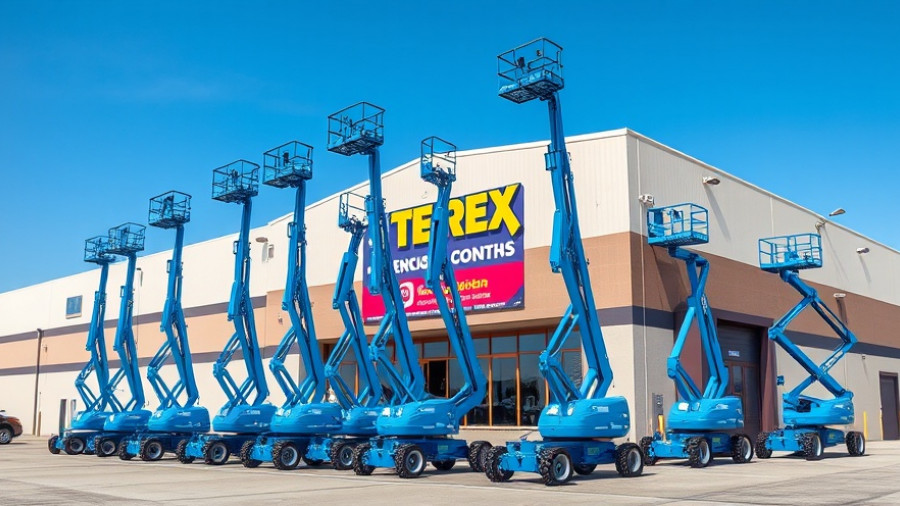
Understanding Terex's Shift: Why the Aerial Business Had to Go
In a significant strategic move, Terex Corporation, a leader in construction and equipment manufacturing, has announced plans to exit its Genie brand aerial lift business and merge with Rev Group. This decision comes against a backdrop of declining sales in the aerial segment, which saw a 13.2% drop in net sales in the third quarter compared to the previous year. This trend reflects broader market shifts, with North American rental customers focusing more on fleet replacement than expansion, prompting Terex to reduce its exposure to cyclical markets.
What the Merger Means for the Industry
The merger with Rev Group is set to create a diversified industrial leader in the specialty equipment sector, focusing on low-cyclical and resilient markets such as emergency services and environmental solutions. Terex's CEO, Simon Meester, emphasized that combining the strengths of both companies will unlock significant value and create exciting opportunities for investment and innovation. Similarly, Mark Skonieczny, CEO of Rev Group, noted that this move represents a natural evolution of their strategy to build a stronger and more profitable company through collaboration.
Financial Prospects: A Closer Look at the Numbers
Post-merger, the combined entity is projected to achieve approximately $7.8 billion in net sales and an Adjusted EBITDA margin of about 11% by the end of 2025. Terex shareholders are expected to hold about 58% of the newly formed company's shares, while Rev Group shareholders will retain 42%. This structure allows both companies to benefit from their shared resources and market reach, providing a solid foundation for future growth.
Impact on Terex's Business Portfolio
Terex's governance strategy has involved streamlining its portfolio, evident in recent moves such as the sale of its tower crane business and the acquisition of Environmental Solutions Group for $2 billion. These transitions underline Terex's focus on profitable segments and sustainable growth opportunities, showcasing a clear commitment to adapt to an evolving industrial landscape.
What Lies Ahead: Market Predictions Post-Merger
As Terex merges with Rev Group, the expectation is that this will enhance their competitiveness in creating innovative solutions tailored for diverse sectors such as environmental management and utility services. The emphasis on long-term growth profiles in these fields is expected to stabilize the combined company's performance, positioning it optimally amidst fluctuating market conditions.
Conclusion: A Call for Strategic Adaptability
As the construction industry continues to evolve, businesses must remain agile and adopt innovative solutions. Terex and Rev Group's merger exemplifies strategic adaptability in addressing market challenges while capitalizing on growth opportunities. For business owners, facility managers, and stakeholders in the construction sector, understanding these trends is crucial for navigating the future.
 Add Row
Add Row  Add
Add 




Write A Comment